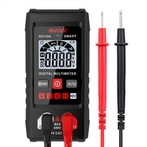What is the typical service life of a gas detector?
With the emphasis on production safety, industrial enterprises, especially chemical enterprises, have become more sophisticated and skilled in the equipment and use of safety equipment and facilities. However, the editor reminds everyone that any equipment and facilities have a service life. Once the safe service life is exceeded, the vehicle should be stopped immediately and submitted to a testing agency for testing. The Company shall prohibit safety equipment if it is damaged or determined by testing to be inoperable. Use registration, scrap, and replace equipment with new ones. The editor below will take gas detectors and gas detectors as examples to explain to you the service life of the sensor, the most sensitive component in the gas detection category, for your reference.
1. QB2000N/QB10N gas detector
The common gas detector sensor is an electrochemical sensor. The average service life of this type of sensor is two years. In special environments such as severe pollution, too high or too low temperature, too high or too low humidity, the service life of the sensor will be shortened. Special reminder: after the electrochemical sensor is unpacked, the sensor has begun to wear. Even if the company does not use it after opening the box, the sensor must be tested or replaced with a new product after its service life. It is recommended that the company install and use the detector promptly after receiving it. , calibrate the detector every year to ensure the normal use of the equipment.
2. GC210 portable gas detector
GC210 portable gas detector is a common gas detector on the market. The service life of the sensors assembled in the detector is generally two years, and the service life will be shortened in special environments such as heavy pollution; and the service life of the detector's electronic components is generally longer.
Although the sensor life is stated in the specifications of gas detectors and gas alarms, the life of the sensor depends on the environment in which it is used. Factors such as temperature, humidity, dust, etc. will reduce the service life and sensitivity of the sensor. Therefore, the sensor must be tested and calibrated at any time, and if it fails, replace it with a new one in time.






